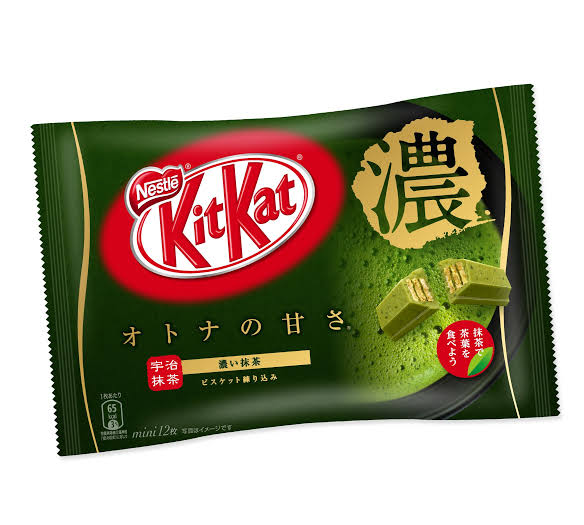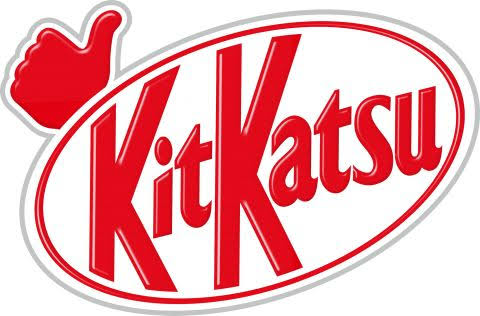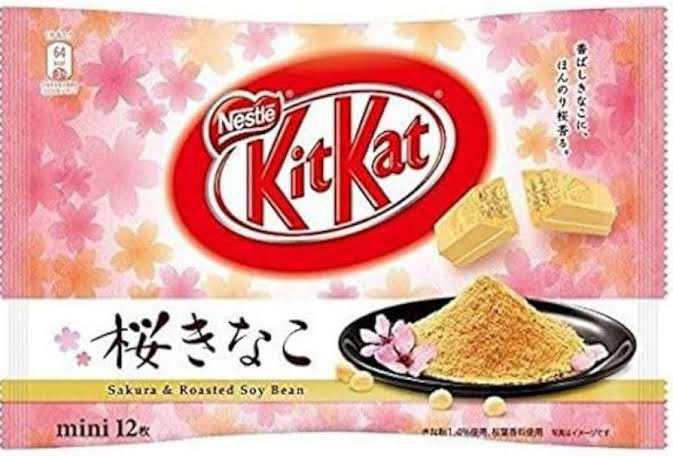The Sweet Revolution: How Japan Made KitKat Its Own
Imagine a chocolate bar so beloved that it becomes a symbol of good luck, a collector’s item, and a must-have souvenir. In Japan, KitKat is not just a snack—it’s a cultural phenomenon. With over 300 unique flavors, from matcha to wasabi, and a deep connection to Japanese customs, the Japanese KitKat offers a journey into the heart of innovation and tradition. Whether you’re a chocolate lover, a curious traveler, or a foodie on the hunt for the next big thing, the story of KitKat in Japan is sure to fascinate and delight.

What is KitKat? A Global Chocolate Icon
KitKat is a chocolate-covered wafer bar created by Rowntree’s of York, England, in 1935. Acquired by Nestlé in 1988, KitKat quickly became one of the world’s most popular snacks, famous for its crisp texture and the iconic slogan, “Have a break, have a KitKat.” Sold in over 80 countries, the classic KitKat consists of layers of wafer covered in milk chocolate, typically packaged in a red wrapper.
But while the original KitKat is a staple in vending machines and supermarkets worldwide, nowhere has this humble snack been reinvented as dramatically as in Japan.
KitKat in Japan: A Snack with a Twist
When KitKat first arrived in Japan in 1973, it was just another imported chocolate bar. But over the decades, it evolved into something extraordinary. Today, KitKat is one of Japan’s best-selling chocolates, with a reputation for creativity, quality, and cultural resonance.
The Exam Season Ritual
KitKat’s popularity soared in the early 2000s, thanks to a clever linguistic twist. In Japanese, “KitKat” sounds similar to kitto katsu (きっと勝つ), which means “surely win” or “certain victory.” This play on words transformed KitKat into a good luck charm, especially among students facing entrance exams. Parents, friends, and teachers began giving KitKats as gifts to wish success, turning the chocolate bar into a symbol of encouragement and hope.

Unique Flavors and Regional Varieties: A Flavorful Adventure
Japan’s KitKat is famous for its astonishing variety. While most countries stick to classic milk chocolate, Japan boasts a dizzying array of flavors—over 300 and counting. These range from the sublime to the surprising, reflecting Japan’s culinary diversity and regional pride.
Why So Many Flavors?
Nestlé Japan’s strategy is rooted in the Japanese love for novelty, seasonal treats, and local specialties. Limited-edition flavors are released regularly, often inspired by local ingredients or traditional desserts. This approach keeps consumers engaged and eager to try the latest creation.
Popular and Unusual Flavors
Here are just a few of the many flavors you might encounter:
- Matcha (Green Tea): Perhaps the most iconic Japanese KitKat, this flavor uses real matcha powder for an earthy, slightly bitter taste beloved by locals and tourists alike.
- Sakura (Cherry Blossom): A delicate blend of floral and sweet notes, often combined with matcha for a springtime treat.
- Sake: Infused with real sake powder, this KitKat offers a subtle hint of rice wine and is a favorite among adventurous eaters.
- Wasabi: A bold choice, this flavor combines the heat of wasabi with white chocolate for a surprisingly harmonious taste.
- Sweet Potato, Red Bean, and Chestnut: Inspired by traditional Japanese sweets, these flavors showcase local ingredients and seasonal favorites.
- Regional Specialties: Many areas of Japan have their own exclusive flavors, such as Hokkaido’s Red Bean & Strawberry, Shinshu Apple, Yokohama Strawberry Cheesecake, and Shizuoka Wasabi.

Seasonal Flavors
Japan’s KitKat lineup changes with the seasons. Spring brings sakura and peach flavors, summer offers ocean salt and lychee, while autumn and winter introduce chestnut, apple pie, and hojicha (roasted green tea).
Region-Limited Editions
Known as Gotochi KitKat, these are available only in specific regions, making them prized souvenirs. Examples include Shinshu Apple from Nagano, Uji Matcha from Kyoto, and Tokyo Banana from Tokyo.
Cultural Significance: More Than Just a Snack
The “Kitto Katsu” Phenomenon
The phrase kitto katsu (きっと勝つ) is at the heart of KitKat’s cultural significance in Japan. This serendipitous pun has made KitKat a popular gift during exam season, job hunts, and even sports competitions. It’s common to see special packaging with encouraging messages, and some KitKats are sold at shrines and temples, where students pray for success.
“KitKat is not just a chocolate bar in Japan—it’s a symbol of hope and encouragement, especially for students facing important exams.”
Gift-Giving and Omiyage Culture
Gift-giving is an important part of Japanese culture, and KitKat fits perfectly into the tradition of omiyage (souvenirs). Travelers often bring back region-exclusive KitKats for friends, family, and colleagues, making the snack a bridge between places and people.
How Japanese KitKat Differs from Overseas Versions
While KitKat is a global brand, the Japanese version stands apart in several ways:
| FeatureJapanese KitKatOverseas KitKat | ||
| Flavors | 300+ unique, seasonal, and regional | Mostly classic, some variations |
| Packaging | Artistic, often gift-oriented | Standard red wrapper |
| Cultural Role | Good luck charm, souvenir, gift | Everyday snack |
| Ingredients | Local specialties, real matcha, sake | Standard chocolate, few twists |
| Marketing | Focus on novelty, limited editions | Classic branding |
Japanese KitKats often use premium ingredients, such as Uji matcha from Kyoto or white peaches from Okayama, and the packaging is designed to appeal to both locals and tourists.
KitKat as a Souvenir: The Perfect Edible Gift
With its wide variety of flavors and beautiful packaging, KitKat has become one of Japan’s most popular souvenirs. Tourists flock to specialty shops, airports, and department stores to pick up exclusive editions.
Where to Buy Special KitKats
- Airports: Major airports like Narita and Kansai offer a wide selection of regional and limited-edition KitKats.
- Department Stores: Chains like Isetan and Takashimaya often have dedicated KitKat sections.
- KitKat Chocolatory: These boutique stores, found in cities like Tokyo and Osaka, offer premium flavors and even allow you to create your own custom KitKat.
- Souvenir Shops: Train stations and tourist hotspots stock region-specific flavors.
Fun Facts, Trivia, and Personal Stories
- Origami Packaging: In a nod to sustainability and Japanese tradition, some KitKats now come in origami paper wrappers. After enjoying your snack, you can fold the wrapper into a paper crane.
- Over 300 Flavors: Japan holds the world record for the most KitKat flavors, with new varieties released every year.
- KitKat for Adults: The “Otona no Amasa” series (“Sweetness for Adults”) offers less-sweet, more sophisticated flavors like dark chocolate and hojicha, catering to mature palates.
- Unexpected Flavors: From ginger ale to apple vinegar and even chili pepper, Japanese KitKat flavors can be delightfully unpredictable.
- Personal Experience: Many travelers recount the thrill of hunting for rare KitKat flavors across Japan. Trying new varieties becomes a fun challenge, and sharing them with friends back home is a way to relive the adventure.
“My favorite Japanese KitKat flavor is matcha latte. It’s not too sweet, with a rich green tea taste that’s unlike anything I’ve tried elsewhere. Every trip to Japan, I make it a mission to find a new flavor to bring back as gifts.”
Conclusion: Why You Should Try Japanese KitKat
Japanese KitKat is more than just a chocolate bar—it’s a window into Japanese creativity, culture, and hospitality. From its role as a good luck charm to its ever-changing lineup of flavors, KitKat in Japan is a testament to the country’s ability to reinvent the familiar and make it extraordinary.
Whether you’re a collector, a student in need of encouragement, or simply a chocolate lover, Japanese KitKat offers a taste of joy, surprise, and connection. So next time you’re in Japan—or spot a box of matcha KitKats at your local Asian market—take a break, have a KitKat, and savor a piece of Japanese culture.
Ready to explore the world of Japanese KitKat? Which flavor would you try first? Share your favorites and discoveries in the comments below!
Comments
Post a Comment